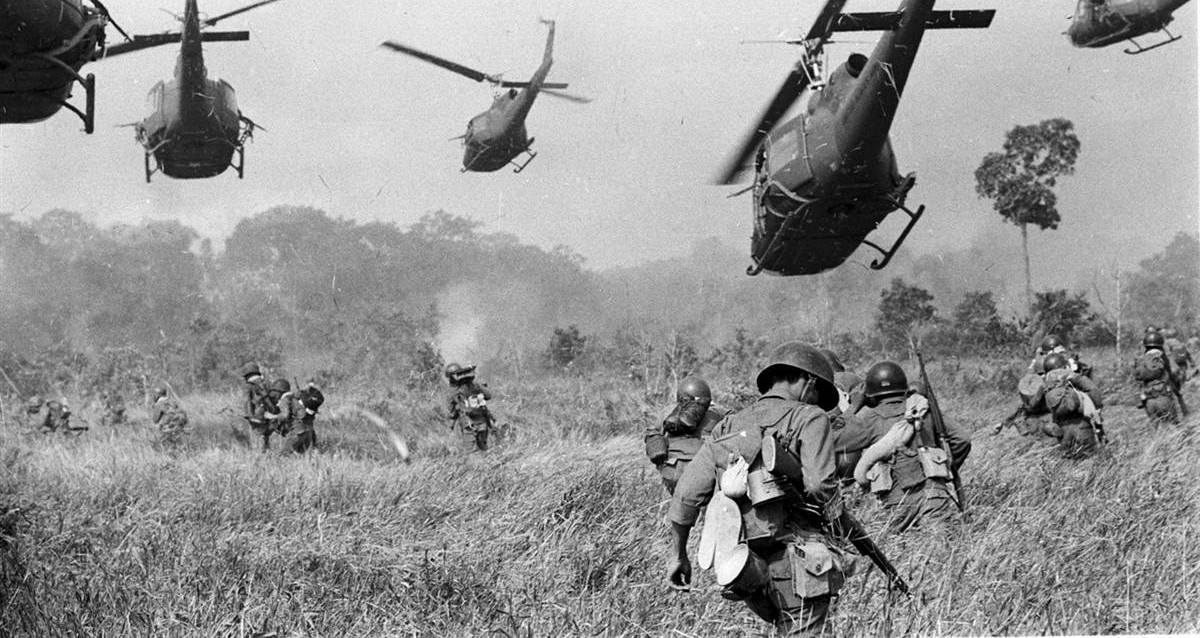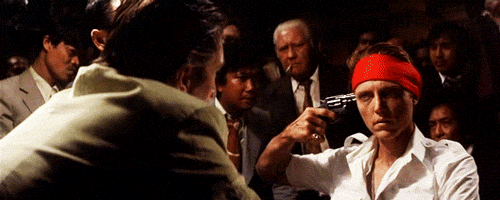
The Vietnam War and American Culture
The Vietnam War and American Culture
No American conflict in the twentieth century so tore this nation apart, so scarred its social psyche, so embedded itself in its collective memory, and so altered the public view of institutions, government, the military, and the media. More than 750 novels, 250 films, 100 short-story collections, and 1,400 personal narratives have been published about the war in Vietnam.
A few figures in popular culture supported American involvement in Vietnam, including novelists John Steinbeck and Jack Kerouac and actor John Wayne, who starred in hawkish The Green Berets, the only major film made during the war itself. Barry Sadler’s 1966 pro-war song “Ballad of the Green Berets” sold 8 million copies.
During the war, popular culture tended to deal with the war indirectly. Such novels as Joseph Heller’s Catch-22 and Kurt Vonnegut’s Slaughterhouse Five and such films as Bonnie and Clyde, M*A*S*H, and Little Big Man were ostensibly about other subjects, but clearly reflected the issues raised by the Vietnam War.
Only after the war was over did Hollywood begin to make a significant number of films about the war itself. Movies like Apocalypse Now, Full Metal Jacket, or Platoon depicted a swampy, fiery hell peopled by psychopaths. As one character in Apocalypse Now puts it, “I love the smell of napalm in the morning.” Many of these Vietnam War films featured a scene modeled on the My Lai massacre of 1968, when American troops killed at least 347 unarmed civilians in a South Vietnamese hamlet.
The emerging images in the media of the “Vietnam vet” were of a troubled and neglected victims—scraggly and deranged outcast with a rumpled boony hat, legless victims converted to pacifism, and returning P.O.W.s scarred by unspeakable horrors.
During the 1980s, a number of influential films focused on Americans who were prisoners of war or missing in action, such as Uncommon Valor, Missing in Action, and Rambo. In the realm of cinematic fantasy, the United States was able to reap revenge for the frustrations and losses it had experienced in Vietnam. Rambo’s most famous line was, “Sir, do we get to win this time?” These films provided consolation concerning the morality of American forces in the conflict. In Uncommon Valor, a character tells a band of fellow veterans about to rescue a group of MIAs: “No one can dispute the rightness of what you’re doing.”
…Music
The Vietnam War had a musical soundtrack. Every novel and every film about Vietnam reminds us that music formed the war’s backdrop, such as the attacking helicopters in Apocalypse Now playing Wagner’s “Ride of the Valkyries.” As in earlier wars, there were songs dealing with separation from loved ones, like the Shirelles’s “Soldier Boy.” But more than in previous wars, the music of the 1960s shaped the very atmosphere in which the war was waged. The war, in turn, helped make the music louder and more intense. Song lyrics were laced with anti-war and sometimes pro-war sentiments, with some embraced by “hawks” and others by “doves.”
There were pro-war songs, like Staff Sergeant Barry Sadler’s “The Ballad of the Green Berets” and Merle Haggard’s “Fighting Side of Me.” There was also a host of anti-war songs, like “Feel-Like-I’m-Fixin’-To-Die Rag” by Country Joe and the Fish.
Many popular songs carried special meaning for soldiers, such as The Animals’ “We’ve Got to Get Out of This Place.” Many songs dealt with the Vietnam war indirectly, including Barry McGuire’s “Eve of Destruction,” John Lennon’s “Give Peace a Chance,” and Edwin Starr’s “War.” The implications of the war are explored in Marvin Gaye’s “What’s Goin’ On,” part of which dealt with his brother’s experience in Vietnam, and Bruce Springsteen’s “Born in the USA.”
Music was more than mere entertainment during the mid-to-late 1960s. Many songs expressed the atmosphere of the time. One example is Country Joe and the Fish’s “I-Feel-Like-I’m-Fixin’-to-Die Rag”:
Come on mothers throughout the land,
Pack your boys off to Vietnam.
Come on fathers, don’t hesitate,
Send your sons off before it’s too late.
Be the first one on your block
To have your boy come home in a box.

Hollywood Versus History
Film
Ironically, the most controversial issue of the 1960s and early 1970s, the Vietnam War, only began to be seriously examined on the screen in the late ’70s. Although many films of the late 60s and early 70s embodied the bitter aftertaste of the war, the conflict itself remained strikingly absent from the screen, as Hollywood, like the country as a whole, had difficulty adjusting to the grim legacy of a lost and troubling war. During the conflict, Hollywood produced only a single film dealing with Vietnam—John Wayne’s The Green Berets. Modeled along the lines of such World War II combat epics as The Sands of Iwo Jima and earlier John Wayne westerns like The Alamo, the film portrayed decent Americans struggling to defend an embattled outpost along the Laotian border nicknamed Dodge City.
Although America’s active military participation in the Vietnam War ended in 1973, the controversy engendered by the war raged on long after the firing of the last shot. Much of the controversy centered on the returning veterans. Veterans were shocked by the cold, hostile reception they received when they returned to the United States. In First Blood (1982), John Rambo captured the pain of the returning veterans: “It wasn’t my war—you asked me, I didn’t ask you…and I did what I had to do to win…Then I came back to the world and I see all those maggots at the airport, protesting me, spitting on me, calling me a baby-killer…”
During the 1970s and ’80s, the returning Vietnam War veteran loomed large in American popular culture. He was first portrayed as a dangerous killer, a deranged ticking time bomb that could explode at any time and in any place. He was Travis Bickle in Taxi Driver (1976), a veteran wound so tight that he seemed perpetually on the verge of snapping. Or he was Colonel Kurtz in Apocalypse Now (1979), who adjusted to a mad war by going mad himself.
Not until the end of the ’70s did popular culture begin to treat the Vietnam War veteran as a victim of the war rather than a madman produced by the war. Coming Home (1978) and The Deer Hunter (1978) began the popular rehabilitation of the veteran, and such as Missing in Action (1984) and Rambo: First Blood II (1985) transformed the veteran into a misunderstood hero.
Where some films, like the Rambo series, focused on the exploits of one-man armies or vigilantes armed to the teeth, who had been kept from winning the war because of government cowardice and betrayal, another group of Vietnam War films—like Platoon, Casualties of War, and Born on the Fourth of July—took quite a different view of the war. Focusing on innocent, naive “grunts”—the ground troops who actually fought the war—these movies retold the story of the Vietnam War in terms of the soldiers’ loss of idealism, the breakdown of unit cohesion, and the struggle to survive and sustain a sense of humanity and integrity in the midst of war.
This image is from the movie The Deer Hunter and was one of the most enduring fictional representations to come out of the Vietnam War.
